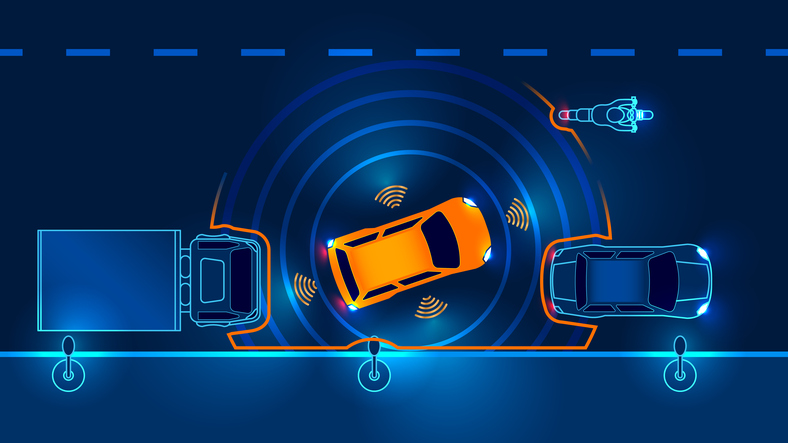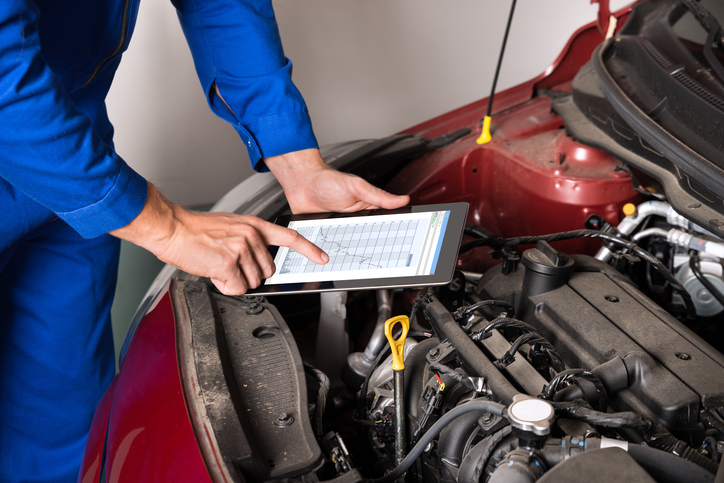Levels 0 to 5: What These Self-Driving Capabilities Mean for Students at Auto Mechanic School

Last year, the US Department of Transportation’s National Highway Traffic Safety Administration (NHTSA) officially adopted the Society of Automotive Engineers (SAE)’s automated driving system scale. This is a 0-5 scale that rates vehicles from completely non-autonomous (0) to being completely capable of carrying out any required driving, manoeuvre, or response that a human could (5). For the first time, auto service advisors and mechanics have a metric for self-driving vehicles, from the lowest levels of autonomy to the resourceful self-driving car of the near future.
What are these levels of autonomy, and what do they mean for students who wants careers in the auto industry? Read on to find out.
Learning to “Scale Spot” Vehicles Over Your Automotive Service Advisor Career
As auto repair shops continue to service the very latest vehicles, this capability scale may grow in significance. The adoption of the rating system by a body as influential as NHTSA means it is likely to see even more adoption by other official bodies. Fortunately, graduates of automotive service advisor training can quickly familiarize themselves with each level.
The autonomy levels are organized as follows:
Level 0: Offers no automation
Level 1: Includes some automation in the form of adaptive cruise control
Level 2: Allows the car to brake or steer the car, but only under certain conditions
Level 3: Lets the car navigate many situations on its own, but requires the driver to sometimes jump in
Level 4: Can act as a human driver under specific circumstances or on certain roads
Level 5: Behaves exactly like a human driver, if not better
As the auto industry adapts to service new, smarter vehicles (say 3 or 4 on the SAE scale) mixed in with non-autonomous cars (0 or 1 on the scale), auto service advisors might need to spot the kind of vehicle they are dealing with quickly, passing along vital information about repairs and maintenance to mechanics.
Future Mechanics Might Not Get Their Hands Dirty as Often as Before
It’s been said that the mechanics of the near future will be able to carry out more work without getting their hands very dirty. This is due to the changing nature of the mechanic’s role. As more vehicles progress up the autonomous scale, they will incorporate more and more high-end technology.
For example, at Waymo, Google’s flagship self-driving car project, prototype vehicles utilize numerous laser scanners to map the environment around the vehicle. Mechanics are already spending increasing amounts of time on tablets and laptops, installing updates and using electronic diagnostic tools to service the increasing array of sophisticated equipment installed into the latest cars. This means that future mechanics will likely complete even more work through electronic diagnostic tools.

Stay in Auto Mechanic School: The Physical Assets Are Not Going Anywhere
It’s important to note that these vehicles, high up the SAE scale though they may be, will still break down without the requisite care and maintenance that can only be learned via auto mechanic school. While instances of damage being done to vehicles through collisions may decrease (some studies even suggest a 90 per cent accident rate reduction), the need for routine car maintenance tasks like changing tires, diagnosing tricky engine problems, replacing worn out parts, and so forth are not going anywhere. It stands to reason then that the mechanics of the future will need to maintain the same primary skillset and be able to tackle these varied but vital tasks on a regular basis.
Do you want to work at the cutting edge of automotive care?
It’s never been easier to build a rewarding auto mechanic or automotive service advisor career through CATI!
